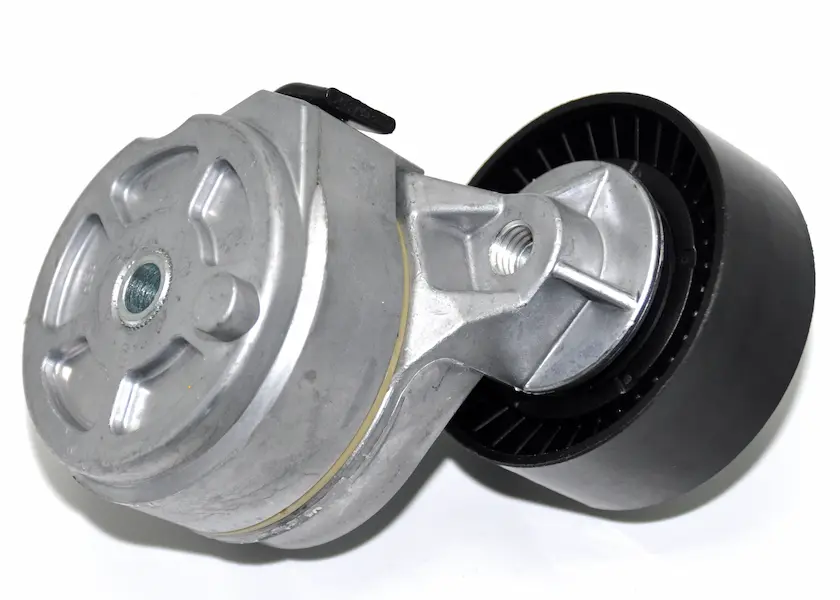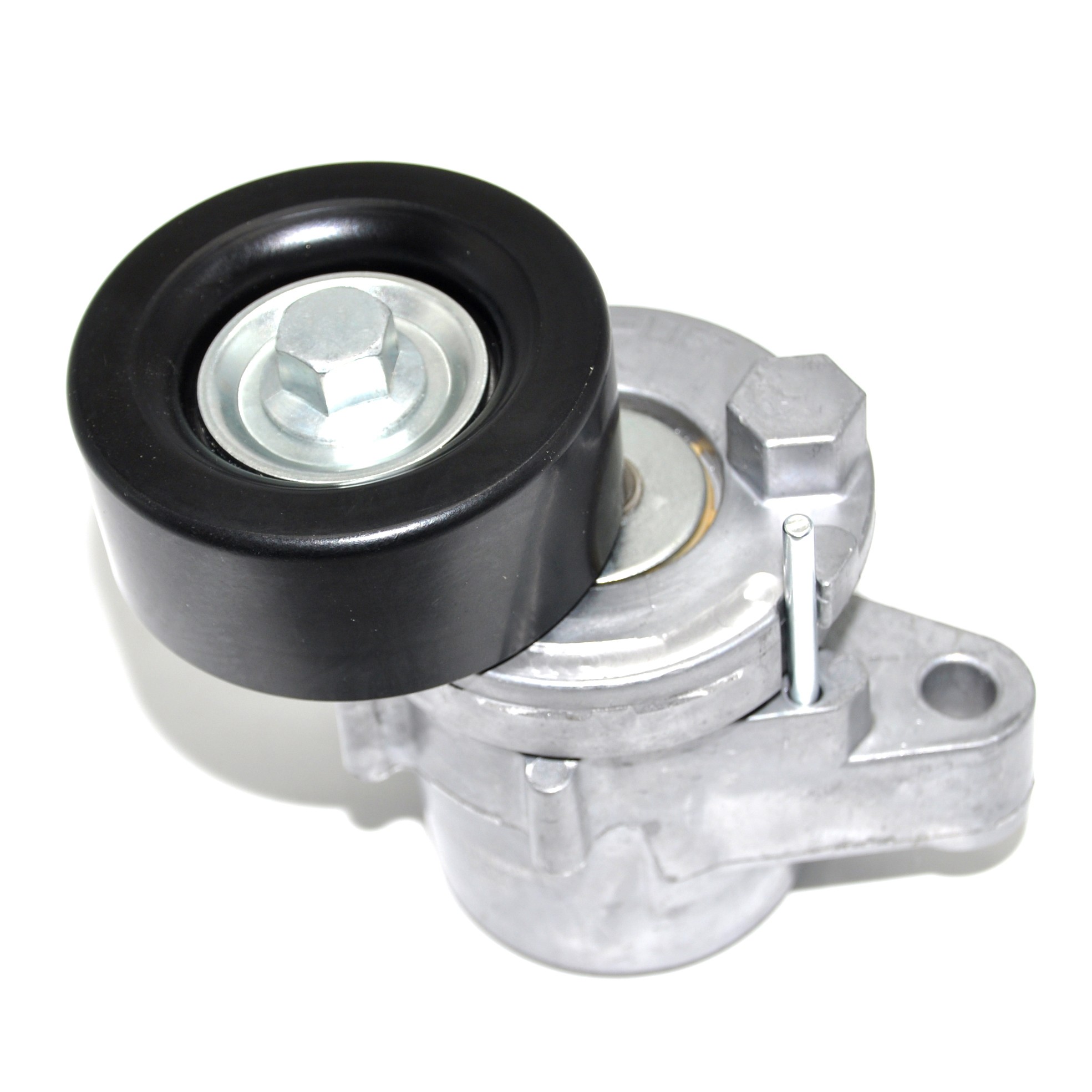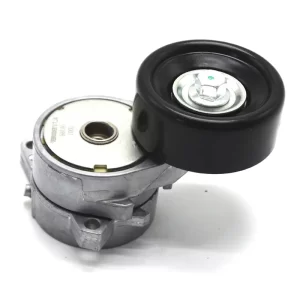I bilsammenhæng er en strammer en mekanisme, der er designet til at regulere og opretholde den rette spænding i en rem, kæde eller lignende fleksibel komponent. Dens primære rolle er at sikre, at remmen eller kæden forbliver stram og korrekt justeret, hvilket er afgørende for at optimere effektiviteten og levetiden af forskellige systemer.
Omvendt bruges tomgangsremskiver til at styre og opretholde den korrekte spænding i motorens drivremme til tilbehør. Ved at styre disse remme og opretholde den korrekte spænding letter tomgangsskiverne en jævn drift af motorens tilbehørssystem. Denne funktion hjælper med at reducere støj og vibrationer, hvilket bidrager til en mere raffineret køreoplevelse.
Premium spændebånd og omløbsskiver til franske bilmodeller: Peugeot, Citroen og Fiat
Introduktion
Ydeevnen og holdbarheden af et køretøjs remtræksystem påvirkes i høj grad af kvaliteten af dets strammer- og tomgangsskiver. Hos Vankv er vi forpligtet til at levere remskiver af høj kvalitet, der er specielt udviklet til franske bilmodeller som Peugeot, Citroen og Fiat. Vores dedikation til præcision og avancerede produktionsteknikker sikrer, at hver remskive lever op til strenge standarder for ydeevne og holdbarhed.
Forståelse af strammer- og tomgangsremskiver
Spænderemskiven er en vigtig komponent, der opretholder den rette spænding på motorens drivremme. Den tilpasser sig automatisk variationer i remspændingen og sikrer, at remmen forbliver stram og korrekt justeret. Det er afgørende for, at motortilbehør som generator, vandpumpe og servostyringspumpe kan fungere problemfrit. Ved at forhindre glidning hjælper remstrammeren med at opnå optimal motorydelse.
Tomgangsremskiver spiller derimod en afgørende rolle i at føre drivremmen rundt om motorkomponenterne. De sikrer, at remmen forbliver justeret og opretholder den korrekte spænding. Ved at støtte og lede remmen reducerer tomgangsskiverne friktion og slitage, hvilket bidrager til en mere jævn motorgang. Det minimerer ikke kun støj og vibrationer, men forbedrer også den samlede køreoplevelse.
Samlet set er vores førsteklasses strammer- og tomgangsremskiver designet til at opfylde de specifikke behov i franske bilmodeller, hvilket giver pålidelig ydeevne og lang levetid.
Vigtige komponenter
Spændeskive:
- Remskivehjul: Vores remskiver er fremstillet af højstyrkepolymerer eller forstærket stål og har en enestående holdbarhed og slidstyrke, der kan modstå mekaniske belastninger.
- Leje: Vi bruger forseglede kuglelejer af høj kvalitet for at sikre jævn drift og beskytte mod forurening, hvilket hjælper med at opretholde en langvarig ydeevne.
- Spændingsfjeder: Denne robuste fjedermekanisme sikrer, at drivremmen har den korrekte spænding. Den tilpasser sig ændringer i remstræk og motorvibrationer og opretholder en ensartet ydelse.
- Monteringsbeslag: Vores præcisionskonstruerede beslag gør installationen nem og sikker og sikrer en stabil fastgørelse til motorblokken.
Tomgangsskive:
- Remskivehjul: Vores tomgangsremskiver er konstrueret af holdbare materialer som forstærket stål eller højstyrkepolymerer og er bygget til at modstå belastningerne ved daglig kørsel.
- Leje: Udstyret med forseglede kuglelejer giver disse remskiver jævn drift og langvarig pålidelighed.
- Afstandsstykke/skive: Dette sikrer korrekt justering og afstand mellem remskiven og monteringsbeslaget, hvilket er afgørende for dens funktion.
- Monteringsbeslag: Beslaget giver et stabilt og sikkert monteringspunkt for tomgangsskiven og sikrer, at den er placeret korrekt.
Det er vigtigt at forstå, hvordan strammer- og tomgangsremskiver fungerer, hvis man vil vedligeholde bilens drivremssystem effektivt. Strammerskiven spiller en afgørende rolle ved at anvende en kontrolleret kraft til at opretholde den nødvendige remspænding. Denne komponent har en spændingsfjeder, der tilpasser sig remmens strækning og motorens vibrationer, hvilket sikrer, at remmen forbliver korrekt spændt og forhindrer, at den glider. Korrekt spænding er afgørende for en effektiv kraftoverførsel i motoren, så alle motorkomponenter kan fungere optimalt.
På den anden side støtter og styrer tomgangsremskiven drivremmen, så den glider jævnt hen over motorkomponenterne. Ved at opretholde den korrekte bane og justering reducerer tomgangsremskiverne friktion og slid på remmen, hvilket igen forbedrer drivremssystemets effektivitet og levetid. Deres funktion er med til at sikre, at remmen kører problemfrit, hvilket bidrager til motorens samlede ydeevne og reducerer risikoen for for tidlig slitage.
Når du installerer disse komponenter, er forberedelse nøglen. Begynd med at samle alt det nødvendige værktøj og kontroller, at du har den rigtige remskivemodel til dit køretøj for at sikre kompatibilitet. Sikkerhed er altafgørende, så frakobl altid batteriet, og lad motoren køle af, før du påbegynder arbejdet. Denne forholdsregel hjælper med at forhindre utilsigtede kvæstelser og skader.
Den gamle remskive fjernes ved forsigtigt at løsne dens monteringsbolte. Det er vigtigt at holde øje med remmens forløb og position under afmonteringen for at sikre, at den nye remskive monteres korrekt. Undersøg drivremmen for tegn på slitage eller skader under denne proces. Hvis remmen viser tegn på forringelse, bør den udskiftes for at undgå potentielle fremtidige problemer.
Ved montering af den nye remskive skal den placeres omhyggeligt og fastgøres med de medfølgende beslag. Sørg for, at remskiven er korrekt justeret og strammet i henhold til producentens specifikationer for at garantere optimal ydelse. For strammerremskiver skal du kontrollere, at spændingsfjederen er sat korrekt i indgreb for at opretholde korrekt remspænding. Ved tomgangsremskiver skal du kontrollere, at remmen er ført korrekt og har den rette spænding.
Til sidst, efter genmontering, tilsluttes batteriet igen, og motoren startes. Se den nye remskive i aktion, lyt efter eventuelle usædvanlige lyde, og kontroller, at remmen er korrekt justeret. Dette sidste trin sikrer, at alt fungerer korrekt, og at drivremssystemet fungerer problemfrit og bidrager til køretøjets motors generelle sundhed og effektivitet.







